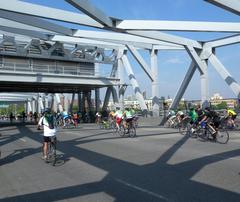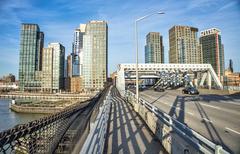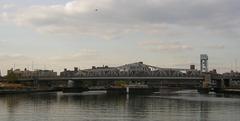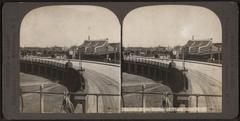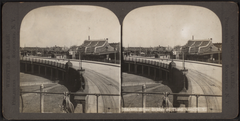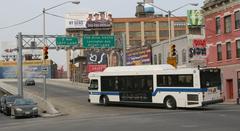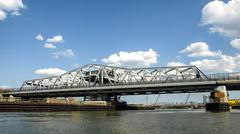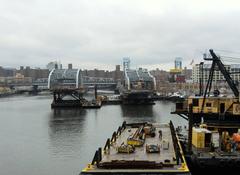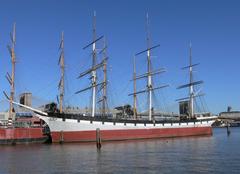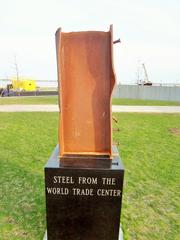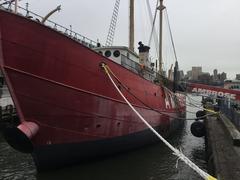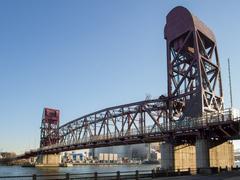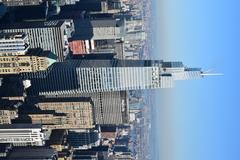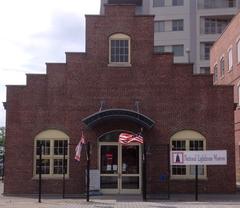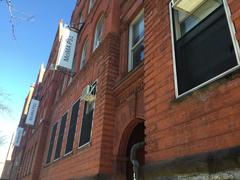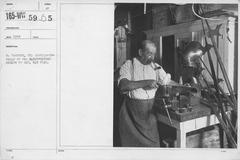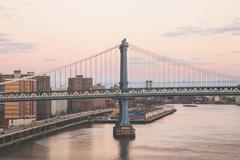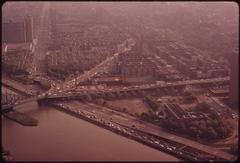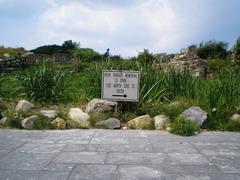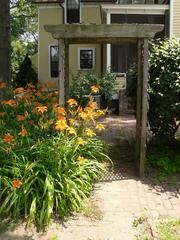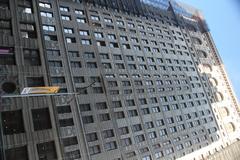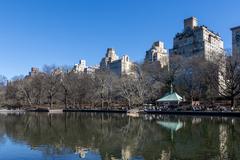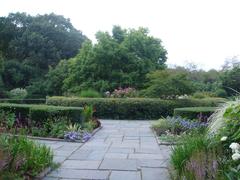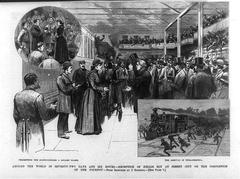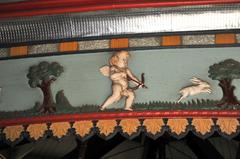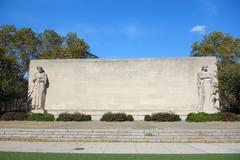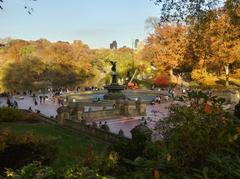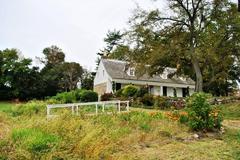
Guide to Visiting Third Avenue Bridge New York City
Date: 24/07/2024
Introduction
The Third Avenue Bridge is an integral part of New York City’s vast and storied infrastructure, connecting the vibrant boroughs of Manhattan and the Bronx over the Harlem River. Originally constructed in 1898, this iconic bridge has undergone several transformations to meet the evolving demands of the city. Whether you are a history enthusiast, an engineering aficionado, or simply a curious traveler, the Third Avenue Bridge offers a unique glimpse into New York’s past and present. This comprehensive guide covers the bridge’s rich history, current significance, and essential visitor information to help you make the most of your visit. Not only does the bridge serve as a critical artery for vehicular traffic, but it also stands as a testament to the city’s ability to adapt and modernize its infrastructure over time (NYC Roads, BridgesNYC).
Table of Contents
- Introduction
- Early Construction and Initial Use
- Conversion to One-Way Traffic
- Reconstruction and Modernization
- Major Reconstruction Project (2001-2005)
- Traffic and Usage Statistics
- Recent Challenges and Heatwave Incident
- Historical Context and Climate Impact
- Cultural and Media Significance
- Public Transportation and Accessibility
- Visitor Information
- Travel Tips
- FAQ
- Conclusion
Exploring the Third Avenue Bridge - History, Significance, and Visitor Information
Early Construction and Initial Use
Originally constructed in 1898, the Third Avenue Bridge was designed to carry both vehicular and pedestrian traffic over the Harlem River. This multi-truss bridge facilitated bidirectional traffic, serving as a crucial link for commuters and travelers between the bustling boroughs of Manhattan and the Bronx.
Conversion to One-Way Traffic
On August 5, 1941, a significant change was implemented: the Third Avenue Bridge was converted to one-way southbound traffic. This conversion was synchronized with the Willis Avenue Bridge, which was altered to carry one-way northbound traffic on the same day. This strategic change aimed to streamline traffic flow and reduce congestion on these critical river crossings.
Reconstruction and Modernization
In 1955, the original multi-truss bridge was dismantled and sold. A new bridge was constructed and reopened in December 1956, featuring modern design elements and improved functionality. This reconstruction was part of a broader effort to update and maintain the city’s infrastructure.
Major Reconstruction Project (2001-2005)
From 2001 to 2005, the Third Avenue Bridge underwent a major reconstruction project led by the New York City Department of Transportation (NYCDOT). This extensive project included the replacement of the swing span and its machinery, as well as the redesign of approach ramps. On October 29, 2004, a new swing span was floated into place, and by December 6, 2004, two lanes of Manhattan-bound traffic were opened. The remaining three lanes were completed and opened in 2005.
Traffic and Usage Statistics
The Third Avenue Bridge is a vital artery for vehicular traffic. The New York City Department of Transportation reported an average daily traffic volume of 59,603 vehicles in 2011. The bridge reached its peak average daily traffic (ADT) of 73,121 vehicles in 2000. Between 2000 and 2014, the bridge opened for vessels 93 times, with a notable 60 openings occurring in 2007.
Recent Challenges and Heatwave Incident
On July 8, 2024, during the North America heat waves, the Third Avenue Bridge experienced a significant operational challenge. The bridge got stuck in the open position due to heat expansion of the steel components, preventing vehicles from crossing. The New York City Fire Department intervened by spraying water onto the bridge to cool it down, allowing it to resume normal operations after several hours.
Historical Context and Climate Impact
The incident in July 2024 was a stark reminder of the challenges posed by climate change and the impact of extreme weather on infrastructure. Historically, the Harlem River bridges frequently opened and closed to accommodate river traffic. However, with fewer vessels using the river today, such incidents have become less common. The bridge now opens approximately four times a year, primarily for larger vessels.
Cultural and Media Significance
The Third Avenue Bridge has captured the public’s imagination through media and cultural references. In 2005, Discovery Channel’s “Mega-Builders” featured an episode titled “Spanning the Harlem,” which documented the work leading up to the float-in of the new swing span. This episode highlighted the engineering feats and challenges involved in maintaining and upgrading such a critical piece of infrastructure.
Public Transportation and Accessibility
The Third Avenue Bridge is not only a vital route for vehicular traffic but also serves public transportation needs. The bridge carries the M125 bus route operated by MTA New York City Transit, with an average weekday ridership of 19,951 passengers. This connectivity underscores the bridge’s importance in facilitating efficient and accessible transportation for residents and visitors alike.
Visitor Information
- Visiting Hours: The Third Avenue Bridge is open 24/7 for vehicular traffic. Pedestrian access is available during daylight hours.
- Ticket Prices: There is no fee to cross the bridge.
- Nearby Attractions: Visitors can explore nearby attractions such as Randall’s Island Park, the Bronx Zoo, and the New York Botanical Garden.
- Accessibility: The bridge is accessible to both vehicles and pedestrians, with accommodations for individuals with disabilities.
Travel Tips
- Best Time to Visit: Early mornings or late afternoons to avoid peak traffic hours.
- Photography Spots: Capture stunning views of the Harlem River from the pedestrian walkways.
- Guided Tours: While there are no official guided tours of the bridge, local tour groups offer historical tours of the surrounding areas.
FAQ
- Q: Is the Third Avenue Bridge open to pedestrians?
- A: Yes, the bridge is open to pedestrians during daylight hours.
- Q: Are there any tolls for crossing the Third Avenue Bridge?
- A: No, there are no tolls for crossing the bridge.
- Q: What are some nearby attractions?
- A: Nearby attractions include Randall’s Island Park, the Bronx Zoo, and the New York Botanical Garden.
Conclusion
The Third Avenue Bridge stands as a testament to New York City’s evolving infrastructure and its ability to adapt to changing demands and challenges. From its early days as a multi-truss bridge to its modern incarnation, the bridge has played a crucial role in connecting Manhattan and the Bronx. Despite facing challenges such as extreme weather and the need for continuous maintenance, the Third Avenue Bridge remains a vital link in the city’s transportation network, reflecting both its historical significance and its ongoing relevance in the urban landscape (CBS News, USA Today).
